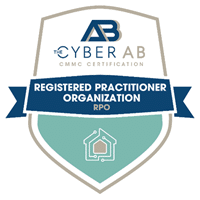Cyber Attacks Explained
Cyber threats constantly evolve, and new attack pathways and variations on existing attacks emerge regularly. In response, cybersecurity measures, such as implementing robust security protocols, regular updates, user education, and employing advanced threat detection systems, are critical to mitigate these risks. In this article, we explore some of the most prevalent cyber-attack methods and provide practical guidance on safeguarding yourself against these evolving threats from malicious actors in the rapidly expanding industry of cybercrime.
What is a Cyber Attack?
A cyber-attack refers to a deliberate and malicious attempt by individuals or organizations to exploit vulnerabilities in computer systems, networks, or devices to compromise, disrupt, or gain unauthorized access to data, services, or resources. These attacks can target various aspects of technology, aiming to cause damage, steal information, or disrupt normal operations.

What are the Most Common Types of Cyber Attacks in 2023?
What are Phishing Schemes?
Phishing schemes are deceptive attempts by criminal actors to trick individuals into sharing sensitive information such as passwords, credit card numbers, or personal data. These schemes often involve fraudulent emails, messages, or websites that impersonate legitimate entities like banks, government agencies, or trusted companies. Phishing attempts can appear highly convincing, using methods like creating fake login pages or urgent messages claiming there’s a problem with an account to prompt immediate action. They aim to manipulate recipients into providing confidential information, which can then be used for identity theft, financial fraud, or other malicious purposes. Staying vigilant and verifying the authenticity of requests for sensitive information is essential to avoid falling victim to these schemes.
What is Ransomware?
Ransomware is a type of malicious software designed to block access to a computer system, encrypt files, or lock a user out of their device. Once the ransomware infects a system, the attackers demand a ransom, usually in cryptocurrency, in exchange for restoring access or providing a decryption key.
There are different forms of ransomware, including:
Encrypting Ransomware
This type encrypts files or the entire system, rendering them inaccessible until a ransom is paid for the decryption key.
Locker Ransomware
This type of ransomware locks the user out of the entire system, making it impossible to access anything on the device until the ransom is paid. Ransomware is commonly spread through phishing emails, malicious attachments, compromised websites, or through vulnerabilities in software. The ransom demanded can vary widely, and there is no guarantee paying the ransom will result in the recovery of files or access to the system.
It is important to note that at the time of this writing, approximately only half of the ransomware victims receive their data back after they have paid a ransom.
What is Cryptojacking?
Cryptojacking is a type of cyberattack where an attacker hijacks someone else’s computing resources, such as a computer, smartphone, server, or even a network of devices, to mine cryptocurrency without the owner’s consent or knowledge. Instead of traditional methods like installing malware or ransomware, cryptojacking involves using malicious scripts or software to take control of a device’s processing power.

Cryptojacking Can Occur Through Various Methods:
Malicious Websites
Some websites may contain scripts that execute in the visitor’s browser without their consent, using their device’s resources to mine cryptocurrency while they are on the site.
Infected Software
Some downloadable software might include hidden scripts that initiate cryptojacking activities on the user’s device once installed.
Compromised Networks
Attackers can compromise networks or servers to install cryptojacking scripts across multiple devices within the network.
What are the Impacts of Cryptojacking?
The impacts of cryptojacking include decreased device performance, increased electricity consumption (mining requires significant computational power), and potential hardware damage due to the constant strain on the device’s resources.
How can I Prevent Cryptojacking?
To prevent cryptojacking, it’s essential to use reputable antivirus or anti-malware software, regularly update software and browser extensions, and be cautious of suspicious websites or links that could contain cryptojacking scripts. Additionally, there are browser extensions designed to block cryptocurrency mining scripts. These can help safeguard against such attacks.
What are IoT Attacks?
IoT (Internet of Things) attacks refer to cyberattacks that target the increasingly interconnected network of devices and systems that make up the IoT ecosystem. IoT devices include a wide range of everyday objects embedded with sensors, software, and connectivity to exchange data and perform various tasks. IoT attacks exploit vulnerabilities in IoT devices and networks to compromise them for various malicious purposes.

How do IoT Attacks Exploit Vulnerabilities in IoT Devices?
Botnet Creation
Attackers can hijack multiple IoT devices to create botnets, which are networks of compromised devices controlled by the attacker. Botnets can be used for large-scale attacks, such as Distributed Denial of Service (DDoS) attacks, where the compromised devices flood a target server with traffic, causing it to become unavailable.
Data Theft
Hackers may exploit vulnerabilities in IoT devices to gain unauthorized access to sensitive data collected or transmitted by these devices. This can include personal information, financial data, or proprietary information.
Device Manipulation
IoT attacks can lead to the manipulation or control of connected devices. For example, unauthorized access to smart home devices like cameras or thermostats could compromise privacy or safety.
Ransomware
Some IoT devices, like smart locks or industrial control systems, can be targeted with ransomware, locking users out or disrupting critical operations until a ransom is paid. IoT devices often have limited security measures and may not receive regular security updates, making them attractive targets for attackers.
How can I Protect myself from IoT Attacks?
Strong Authentication
Use unique, strong passwords and enable two-factor authentication on IoT devices.
Regular Updates
Keep devices updated with the latest firmware and security patches.
Network Segmentation
Isolate IoT devices on separate networks to limit their exposure to potential attacks.
Security Monitoring
Employ monitoring systems to detect unusual activities or unauthorized access to IoT devices.
Vendor Scrutiny
Choose devices from reputable manufacturers that prioritize security and provide regular updates and support. As the number of IoT devices continues to grow, addressing IoT security challenges becomes increasingly necessary to safeguard individuals, businesses, and critical infrastructure from potential cyber threats.
What does DDoS Stand for?
DDoS stands for Distributed Denial of Service. It’s a type of cyber-attack where multiple compromised systems are used to flood a target system, server, or network with an overwhelming volume of traffic. This type of attack bombards the targeted system or network with an inundation of requests or data, surpassing its capacity to respond, thereby causing disruption or complete downtime for legitimate users attempting to access the services.

What Happens in a DDoS Attack?
Distributed Nature
Unlike a traditional DoS attack, where one source tries to overwhelm a target, a DDoS attack involves multiple sources, often a network of compromised computers or devices (botnets), coordinated to launch the attack simultaneously.
Volume of Traffic
The attackers flood the target with an enormous volume of requests, overwhelming its resources like bandwidth, CPU, or memory, making it unable to respond to legitimate requests.
Impact
The target system or network becomes slow, unresponsive, or completely inaccessible to legitimate users, disrupting services, causing financial losses, or affecting the reputation of the targeted organization.
How is a DDoS Attack Executed?
Volume Based Attacks
Flooding the target with massive amounts of traffic (UDP or ICMP floods).
Protocol Attacks
Exploiting weaknesses in protocols to consume server resources (SYN or Ping of Death).
Application Layer Attacks
Overloading specific parts of an application or service (HTTP floods).
How do I Mitigate DDoS Attacks?
Network Security Solutions
Employing firewalls, intrusion detection/prevention systems, and routers with DDoS mitigation capabilities.
Content Delivery Network (CDN)
Using a CDN service can help distribute traffic and absorb DDoS attacks by spreading the load across multiple servers.
Traffic Filtering
Implementing traffic filtering mechanisms to distinguish between legitimate and malicious traffic.
Anomaly Detection
Using systems that detect unusual traffic patterns and react accordingly, such as rate limiting or blocking suspicious traffic. DDoS attacks remain a significant threat to online services and networks, and defending against them requires a combination of proactive measures, network monitoring, and response plans in place to mitigate the impact when an attack occurs.
What are Operational Technology Attacks?
Operational Technology (OT) attacks refer to cyber-attacks specifically targeting the systems and networks used to manage and control physical devices and processes in various industries, such as manufacturing, energy, transportation, and critical infrastructure. OT encompasses technologies like industrial control systems (ICS), supervisory control and data acquisition (SCADA) systems, and other machinery and devices used for monitoring and controlling industrial processes.

What are some of the Consequences of an OT Attack?
Disruption of Operations
Attackers may aim to disrupt manufacturing processes, halt production lines, or interfere with critical infrastructure, causing significant operational downtime and financial losses.
Physical Damage
OT attacks could potentially lead to physical damage to equipment or systems, posing risks to safety, the environment, and public welfare.
Data Manipulation
Altering or manipulating data within OT systems can lead to incorrect measurements, misleading information, or unauthorized control of physical processes.
What Forms Can Operational Technology Attacks Take?
Malware Targeting OT Systems
Malicious software specifically designed to target industrial control systems or SCADA systems can disrupt operations or manipulate critical processes.
Supply Chain Attacks
Compromising third-party vendors or suppliers whose products or services integrate into OT systems can lead to vulnerabilities or backdoor access to critical infrastructure.
Physical Access Exploitation
Attackers gaining physical access to industrial facilities or equipment may directly manipulate or sabotage systems.
Network Intrusions
Exploiting vulnerabilities in OT network infrastructure or protocols to gain unauthorized access and manipulate or disrupt operations. Due to the interconnectedness of IT (Information Technology) and OT systems, with the convergence of technologies, securing OT environments has become increasingly critical.
What are some Protective Measures I can take for OT Systems Security?
Segmentation and Isolation
Segregating OT networks from external connections and implementing strong network segmentation.
Security Patching and Updates
Regularly updating and patching OT systems and devices to address known vulnerabilities.
Access Control and Authentication
Implementing strict access controls and authentication mechanisms to limit access to authorized personnel.
Continuous Monitoring and Incident Response
Employing robust monitoring tools and incident response plans to detect and respond to potential threats promptly. Protecting OT environments involves a comprehensive approach that combines cyber hygiene practices, employee training, risk assessments, and collaboration between IT and OT security teams to mitigate potential risks and ensure the resilience of critical industrial systems.
The Common Cybersecurity Thread and Biggest Security Risk of All
The common driver in all these high-risk factors isn’t technical at all – it lies with the people companies entrust to carry out their work.
People control which emails are opened, manage passwords required to access specific accounts, and work with programmed equipment to keep it functioning properly. Statistics prove that a whopping 95% of all information and cybersecurity breaches are the result of human error. People write passwords down, so they don’t forget, leave accounts open at their desks while they step away, and use unsupported and against-policy methods of accessing information to make their jobs easier.

Participation and Cooperation from Everyone
Companies are telling their people over and over that information security isn’t just an issue for IT to take care of, but that it requires participation and cooperation from everyone, every day. For the sake of convenience, workers put themselves and their companies at risk by brushing off those IT warnings and by dragging their feet to conform to new protocols. The outcome of this lack of attention and prioritization can result in tens of thousands or millions of dollars lost for a company.
How Core Business Solutions Can Help
Core Business Solutions offers ISO Certification Consulting relating to Cybersecurity including ISO 27001, NIST/CMMI, ISO 20000-1, CMMC, and Cybersecurity training for small businesses.
ISO 27001
What Types of Companies get ISO 27001 Certified?
ISO 27001 is an international standard for information security management systems (ISMS), and it can be implemented by various types of organizations across different industries. It’s not specific to a particular industry but rather applicable to any organization that handles sensitive information and wants to establish a robust framework for managing and protecting that information.
Companies that often pursue ISO 27001 certification include:
Financial Institutions
Banks, insurance companies, investment firms, and other financial entities handle sensitive financial data.
Healthcare Organizations
Hospitals, clinics, healthcare providers, and related entities manage sensitive patient information and healthcare data.
Technology and IT Services Providers
Companies involved in software development, IT services, cloud computing, and data centers that handle sensitive information.
Government Agencies
Government departments, agencies, and organizations dealing with sensitive citizen information and national security data.
Manufacturing and Industrial Companies
Organizations involved in manufacturing, utilities, and critical infrastructure where information security is crucial to operations.
Retail and E-commerce
Companies handling customer payment information, personal data, and conducting online transactions. Educational Institutions Schools, colleges, universities, and educational bodies manage student data and intellectual property. The key factor driving the adoption of ISO 27001 is the need to protect sensitive information, maintain confidentiality, ensure data integrity, and establish a robust framework for managing information security risks. Organizations of varying sizes and industries pursue ISO 27001 certification to demonstrate their commitment to information security and to build trust among stakeholders, customers, and partners.
CMMI/NIST Certification

NIST Cybersecurity Framework (CSF)
How can NIST Help Different Types of Organizations?
Government Agencies
Federal, state, and local government bodies often adopt the NIST CSF to establish a framework for managing and improving their cybersecurity posture.
Critical Infrastructure Sectors
Companies in critical sectors like energy, healthcare, finance, transportation, and utilities adhere to the NIST CSF to safeguard against cyber threats and protect essential services.
Technology and IT Services
Organizations in the technology sector, including software development firms, IT service providers, and data centers, implement the NIST CSF to bolster their cybersecurity measures.
CMMI Certification (Capability Maturity Model Integration)
How can CMMI Certification Help Organizations?
Software and IT Companies
Organizations involved in software development, IT services, and technology sectors pursue CMMI certification to enhance their development processes, improve product quality, and increase efficiency.
Engineering and Manufacturing
Companies engaged in engineering, manufacturing, and product development leverage CMMI to streamline processes, ensure product quality, and optimize their operations.
Government Contractors
Organizations working as government contractors or suppliers often pursue CMMI certification to meet the stringent quality requirements specified by government agencies.
NIST and CMMI Provide Frameworks
Both NIST and CMMI certifications aim to standardize processes, improve performance, manage risks, and enhance overall quality. These certifications provide frameworks and best practices that can be applied across diverse industries, enabling companies to align with industry standards and improve their competitive edge by demonstrating a commitment to quality, security, and efficient processes.
What is ISO 20000-1 Certification?

What are some types of companies that pursue ISO 20000-1?
IT Service Providers and Managed Service Providers (MSPs):
Companies offering IT services, including IT consulting firms, cloud service providers, and managed service providers, seek ISO 20000-1 certification to demonstrate their commitment to delivering high-quality IT services to clients.
Telecommunications Companies:
Telecom companies providing a range of services such as internet, mobile, and networking often pursue ISO 20000-1 to ensure the reliability and quality of their services.
Financial Institutions:
Banks, insurance companies, and other financial organizations that heavily rely on IT infrastructure for customer service, transactions, and data management pursue ISO 20000-1 to ensure the reliability and security of their IT services.
Healthcare Organizations:
Hospitals, clinics, and healthcare providers use IT extensively for patient management, records, and critical healthcare services. They pursue ISO 20000-1 to ensure the efficiency and security of their IT systems.
Government Agencies:
Federal, state, and local government entities aiming to provide efficient citizen services and manage internal operations often adopt ISO 20000-1 to enhance the quality and reliability of their IT services.
Education Institutions:
Universities, schools, and educational institutions that heavily rely on IT infrastructure for administrative tasks, e-learning platforms, and student services pursue ISO 20000-1 to ensure the effectiveness and reliability of their IT systems.
Quality IT Services
ISO 20000-1 certification demonstrates an organization’s commitment to delivering quality IT services, continuous improvement in service delivery, and adherence to international best practices in IT service management. By implementing this standard, companies aim to enhance customer satisfaction, reduce service disruptions, and optimize their IT service delivery processes.
CMMC
What is CMMC?

What Types of Companies Typically Pursue CMMC?
Defense Contractors and Suppliers:
Companies that provide goods and services to the U.S. DoD, including defense manufacturers, technology vendors, software developers, and consulting firms, pursue CMMC to comply with cybersecurity requirements and continue their work within the DoD supply chain.
Subcontractors and Suppliers:
Even subcontractors and suppliers within the DoD supply chain must meet specific cybersecurity standards outlined by the DoD. They pursue CMMC to ensure compliance with cybersecurity practices and continue their partnerships with prime contractors working on DoD projects.
IT Service Providers:
Companies offering IT services, managed services, cloud services, or cybersecurity solutions to DoD contractors may also pursue CMMC certification to demonstrate their commitment to securing sensitive information and supporting the defense industry’s cybersecurity requirements.
Research and Development (R&D) Firms:
Companies engaged in research, development, and innovation for defense-related technologies often handle sensitive information and pursue CMMC certification to maintain compliance while contributing to defense projects.
Assessment of Cybersecurity Practices
CMMC certification involves an assessment of an organization’s cybersecurity practices across multiple maturity levels, ranging from basic cyber hygiene to advanced practices. It ensures that companies handling CUI within the DoD supply chain adhere to specific cybersecurity controls and practices, thereby reducing the risk of data breaches, protecting sensitive information, and safeguarding national security interests.

Cybersecurity Training for Small Business
Every single business, small or mammoth needs cybersecurity training. Now. Period. We offer Basic Cybersecurity Training. Learn More Here.
Our Cybersecurity Solutions
We offer this simple, effective solution to help small businesses meet their cybersecurity needs:
CORE Vault™
Everything you need for NIST/CMMC in one cloud-based solution
CORE Vault comes ready-made for compliance with the DoD contracting requirements of DFARS, NIST SP 800-171, and CMMC 2.0. With CORE Vault™, you can separate government data from your network and access it through a secure, cloud-based environment managed by our cyber experts. CORE Vault™ also includes the support needed to reach full compliance with the non-technical cybersecurity requirements, such as your system security plan and required policies.
The CORE Security Suite
- Document and record control
- User-friendly project dashboards
- Incident management
- Security change logs
- Risk register
- Asset management
We also provide standard-specific tools depending on your security requirements. For companies who require NIST/CMMC, we provide a simple SSP tool, an automated SPRS score calculator, and customizable policy templates crafted by our own CMMC experts.
Core Business Solutions, established in 2000, is a Registered Practitioner Organization through the Cyber AB and has been providing consulting and technical solutions for NIST/CMMC for over 5 years. Rick Krick is the Director of Security Solutions for Core Business Solutions and directs our Cybersecurity Services solutions including CMMC. Rick has over 25 years of experience in Management System implementations, software development, IT services, and certifications.




